How much do companies charge to design a website? Which pricing model brings the highest profit?
If you own a web design company or simply offer web design within your services, learning how to price your work properly is a must!
To help you create fair pricing for web design, we spoke to representatives from 8 successful creative agencies to cover topics such as:
- How agencies price their web design projects,
- How to make sure you get paid for your work, and
- General advice on web design pricing.
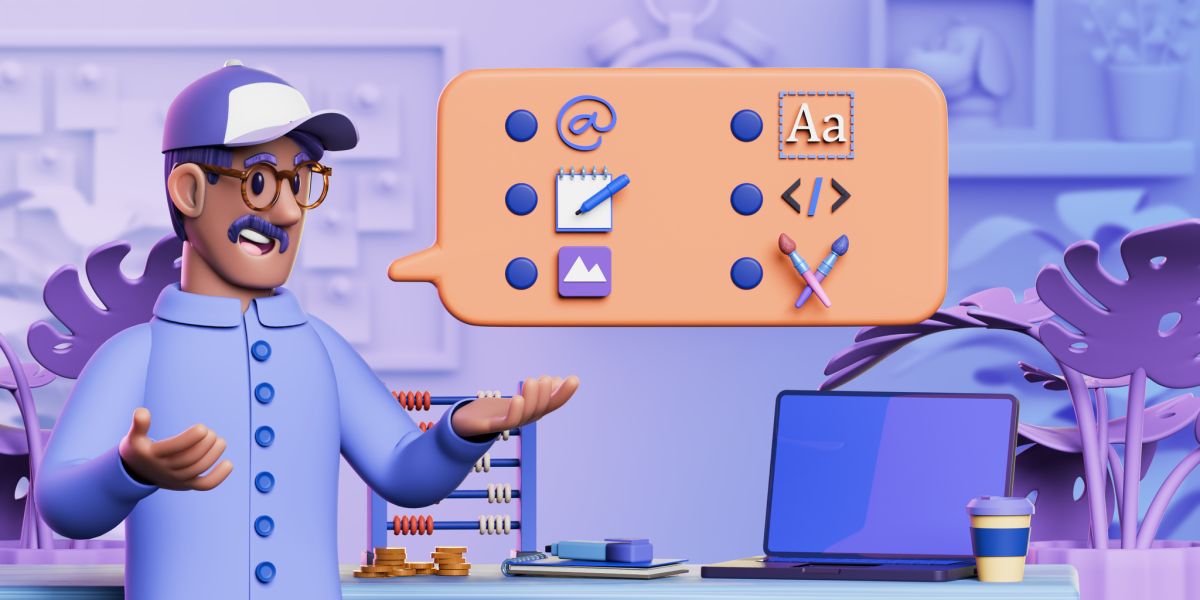
- Creating a thorough pricing system makes billing easier.
- Most agencies use a combination of pricing methods to cater to different clients’ needs.
- Price transparency helps avoid non-paying clients.
- Clear communication from project start to finish ensures client satisfaction.
- Signing a legal document with a client obligates them to honor their payment duties.
Table of Contents
How do design agencies charge for their web design services?
When creating pricing for your agency, you’ll need to consider various factors — from a pricing model that works best for your design approach to project size and timeline.
Let’s take a look at how famous creative agencies approach web design project pricing to help you get a gist of all the nuances of different pricing systems.
Ascendly Marketing
“Our approach is rooted in clarity and trust.” — Marshal Davis, Ascendly Marketing
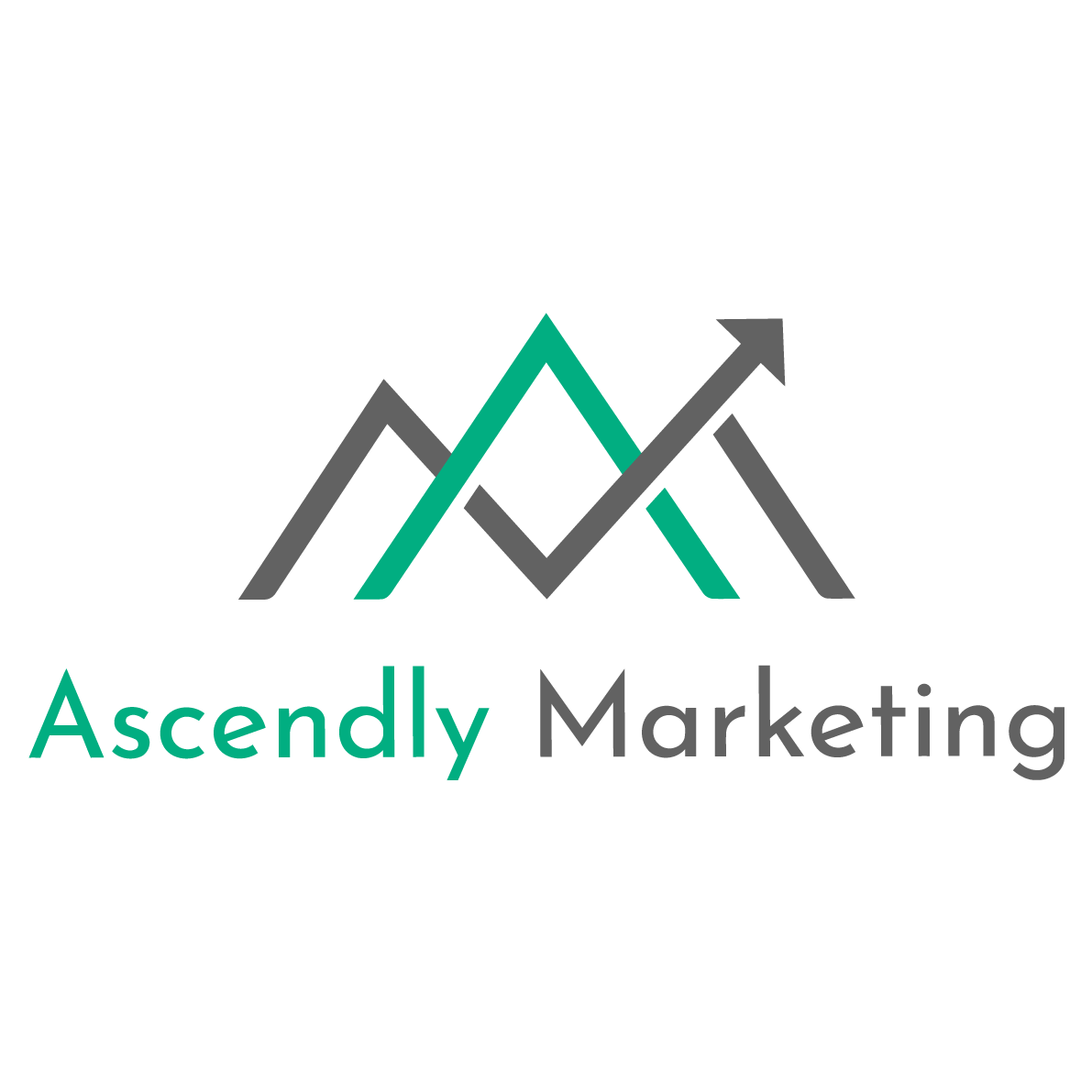
Marketing and website design agency, Ascendly Marketing, is committed to helping businesses drive revenue growth.
How Ascendly Marketing charges clients
President of Ascendly Marketing, Marshal Davis, explains that Ascendly Marketing has clearly outlined payment terms:

“Every project begins with a written agreement that clearly outlines payment terms. This includes an initial deposit, a significant payment post-design, and a relatively smaller final payment. This structure minimizes potential issues and ensures both parties are on the same page.”
He describes this agency’s pricing as “adaptive:”

“For smaller local businesses, we offer a few distinct price levels based on the client’s specific requirements, such as the need for extensive SEO or a focus on quality design. For larger-scale websites, especially those with 100+ pages or e-commerce functionalities, we introduce a per-page pricing model.”
In addition, Ascendly Marketing’s pricing depends on their clients’ needs and project timelines. According to Davis, this flexibility allows the agency to cater to a variety of budgets and a wide range of projects.
💡 Clockify Pro Tip
A good payment software makes payments easier and allows for easier management of installments. Here’s the list of the best payment apps:
Key web design pricing advice from Ascendly Marketing
Davis believes a fair price for your web design services ensures both the client and the agency are satisfied:

“Competing on price by being the cheapest is a lose-lose situation. It neither benefits the client nor the designer. Instead, focus on delivering value and building trust. By underpricing a project, you find you start cutting corners to reduce cost and both sides end up frustrated.”
A Digital Media Company
“The initial estimate is the most important” — Julie Keating, A Digital Media Company

Digital advertising, reputation management, SEO, social media management, and website development are just some of the services A Digital Media Company offers to help clients present their brands to customers.
How A Digital Media Company charges clients
VP of Digital Marketing at A Digital Media Company, Julie Keating, explains their agency determines the web design pricing by differentiating between dynamic sites and those that aren’t dynamic:
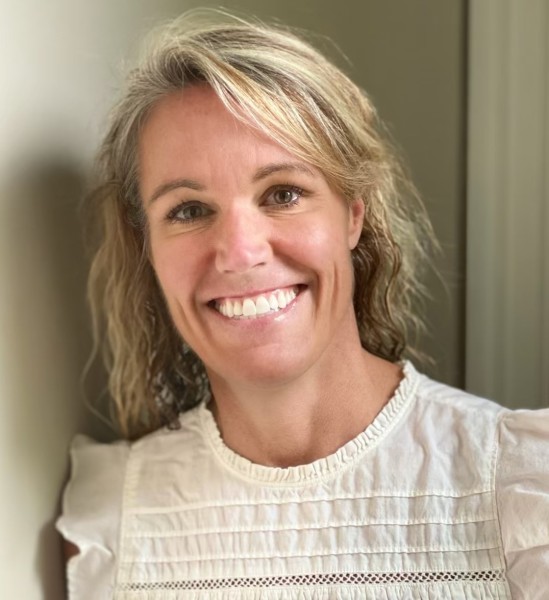
“The reason we charge that way is that each page costs our design and development team extra time. Also, if it is a dynamic page, meaning that it is not simply a template, it requires coding, which also takes more time than a non-dynamic site.
Once they establish clients’ needs, A Digital Media Company provides a detailed estimate of costs:

“We provide our customers with an estimate for all costs that details every line item. Things like whether it is an e-commerce site, contact forms needed, a newsletter collection button, donation button, and other third-party integration tools, all take time so they are priced accordingly.”
According to Keating, a predetermined price for services is not the best solution for clients:

“We don’t give one-size-fits-all estimates or pricing because if we did, more than likely, people would end up paying way more than they should for simpler sites. In saying that, when we provide an estimate, it is binding and if it takes more time, then that is on us for not estimating time correctly. If there are things that our clients want to add, along the way, they are discussed and we determine how much extra time it will take, and if it is necessary to charge more.”
To ensure they get paid for their services, the company divides payment into installments that correspond to project milestones:

“We structure the payments so that there are milestones that we complete. The final payment is due just before the site goes live.”
Key web design pricing advice from A Digital Media Company
Keating believes the most important aspect of client relations is communication:

“Talk extensively with your clients about their needs and make sure that you ask important questions about function, navigation, and third-party plugins that might make their lives easier.”
In addition, breaking down the work and time it takes to complete tasks allows for transparency and accountability with the client:

“Just like being a building contractor, when you are building a website, you have to break down your time so that you fairly charge and are fairly paid, and always stay on time or alert the consumer of any time changes or fees well in advance so that there is no confusion.”
Transparency also helps clients understand the process of completing the tasks:

“I think it is hard for our clients to see how much time something will take. It seems very easy to ‘just add’ something when you don’t know what it looks like on the backend. I believe the initial estimate is the most important. It is a contract that is supposed to protect both parties, not just us!”
Twogether Digital
“Create a process that is repeatable across projects.” — John Millist, Twogether Digital

A UK-based creative agency, Twogether Digital, helps drive long-term growth to businesses by delivering digital marketing solutions such as SEO, web design, and branding.
How Twogether Digital charges clients
We spoke to a co-founder of Twogether Digital, John Millist, to explore how this agency approaches web design pricing.
He believes the best approach for his agency is the value-based pricing model. This model bases pricing on the value it brings to a business. It involves thorough research to determine the exact problem and growth path that brings the most value to the client:

“We will list out specific client requirements in terms of functionality. Across most projects, there is a standard set of elements required, but occasionally, clients require their websites to have extra functionality, which we take into account. We then list out what we know a client will need to achieve their goals. We work out how long these things will take but with a main focus on the value it will add to the business.”
The key to pricing and getting paid is setting the right pricing expectations from the beginning:

“A standard website with the elements we know any client will need is our basic starting point, so we always quote that prices start from £xxxx. This means we remove any tire kickers who are looking for a quick, cheap price and set expectations as to what the cost will be right from the beginning.”
Moreover, Twogether Digital charges in two installments: a 50% upfront charge for web design and another 50% payment before the site goes live.
Millist believes the more a client is willing to spend, it’s more likely you’ll be able to properly charge them for services:

“The more money a client is spending, the more receptive they are to paying bills and moving the project forward. That’s why it’s important to qualify your leads before, during, and after discovery/sales calls.”
Key web design pricing advice from Twogether Digital
Millist’s advice to any web design agency is to have a process that can be used across projects. He highlights how easier coming up with project pricing is once a specific pricing framework is created:

“Because we have a specific framework we work towards with our websites, we know what elements are needed and how long generally it will take. As you scale, you will need other people in your agency to start quoting, and it becomes easier to do and is more consistent across staff if you have a process that everyone can follow.”
💡 Clockify Pro Tip
Knowing how to track the profitability of a project is crucial for understanding the value your work brings to a client:
AJM Design Studio
“Every single piece of the process is valuable and billable!” — Amanda Jones McNay, AJM Design Studio
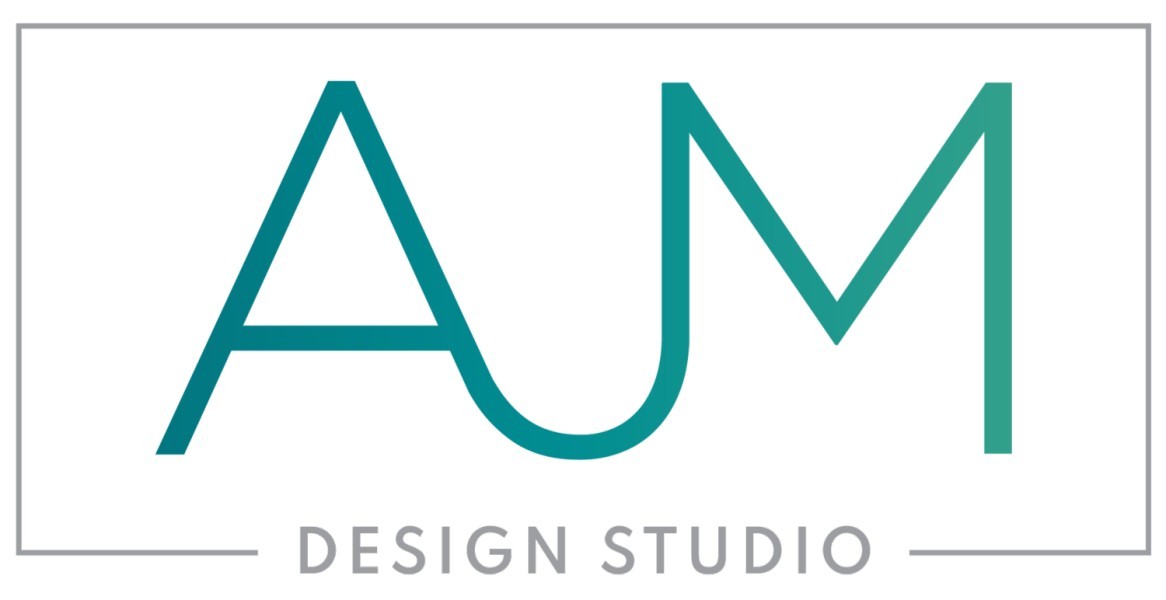
As a design studio, AJM is on a mission to help businesses create their brands and stand out visually.
How AJM Design Studio charges clients
According to the owner, Amanda Jones McNay, the studio opts for custom, flat-rate pricing:

“We create custom pricing based on all factors: page count, content, plugins, photo sourcing, rounds of edits, setting up e-commerce, connecting domains, etc. Although all of our website pricing is flat-rate, we find that number based on how many hours the website will take from the beginning, through edits, to launch.”
She believes flat-rate pricing makes the billing process much easier:

“The method stays the same, but the cost can vary greatly based on needs. For example, one client may need a very straightforward 4-page website while another client also needs a 4-page site, but with tons of custom CSS, e-commerce setup, etc. Those websites shouldn’t be priced the same simply because they have the same number of pages.”
To ensure you get paid for your work, Jones McNay suggests upfront payment:

“First and foremost, ALWAYS invoice for half of the project upfront. We don’t start work until that first half invoice has been paid. As for the final invoice, make sure your contract has a late payment penalty.”
She also believes you can easily determine whether you’re dealing with an evasive client:

“You can tell pretty quickly if a client is the type to dip out on payment. If they’re constantly haggling, not respectful of your time, saying they could do it themselves, etc., that’s not who you want to work with.”
Key web design pricing advice from AJM Design Studio
Jones McNay advises agencies that want to offer flat-base pricing to keep in mind every aspect of the project they’re working on:

“Don’t forget that you spend time on: client calls, research, photo sourcing, photo editing, conceptualizing, making edits, connecting domains, etc. Every single piece of the process is valuable and billable!”
💡 Clockify Pro Tip
Not sure how to differentiate between billable and non-billable hours and what to include in an invoice? Check out this blog post:
DELPHAR
“Focus on the value rather than the cost.” — Brian Carter, DELPHAR
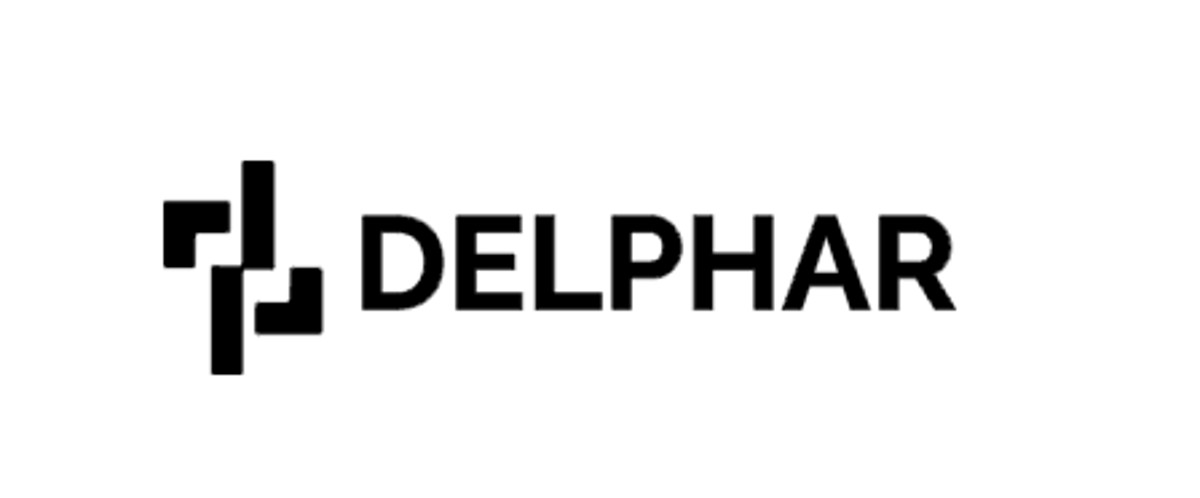
Aiming to deliver technology solutions that make a difference to clients’ businesses, DELPHAR offers various services, such as software and mobile application development, web design, marketing, SEO, and consulting.
How DELPHAR charges clients
Business Development Manager at DELPHAR, Brian Carter notes that DELPHAR uses contracts to ensure they get paid fairly for their services:
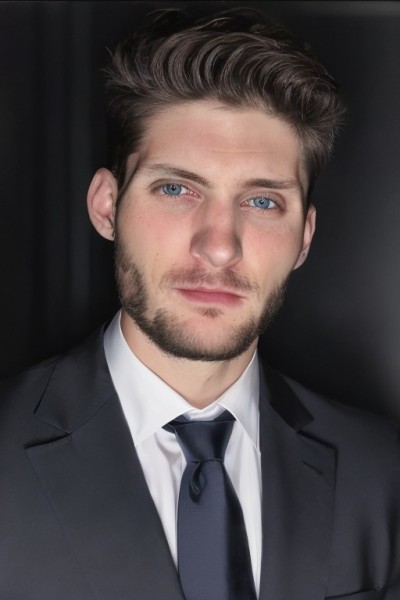
“We’ve established a robust contract for all our services, which we thoroughly review with clients during onboarding. This clarifies payment terms and the scope of work. As a result, non-payment is rare. We send automated payment reminders and follow up with clients who haven’t paid.”
After years-long experimentation and analysis on the best pricing method, DELPHAR decided to implement a unique pricing approach by offering long-term support to clients.
Carter explains how offering services and support for a longer period of time benefits the client:

“We assess the client’s needs, the work required, and the level of customization to determine the project cost, including design, development, and support, split over 12-36 months. This approach suits many of our small to medium-sized business clients, offering affordable monthly payments while allowing us to dedicate our full efforts to each project.”
The actual price of services is fully dependent on clients’ needs:

“Usually, our pricing is based on the number of pages the site requires, and the need for a CMS, and the price keeps going up if we need to work on a specific timeline or implement other services, such as payment capture, client portal, integrations with the client’s line of business software, etc.”
Carter notes they rarely encounter problematic clients. If they do, contracts allow them to resort to legal action:

“In extreme cases, we may escalate the situation through a collection agency or legal action, which is a last resort. A strong contract is essential in such situations.”
Key web design pricing advice from DELPHAR
Carter believes the key to determining the price of web design services is to look at the value it brings to a business:

“When assessing web design project pricing, focus on the value it offers. For instance, if a business can gain 50 additional clients with a well-crafted website, and optimize their operations for greater efficiency, a $15,000 investment is justified, especially if their average customer value is $10,000.”
Imagefix
“Prioritize open and transparent communication with your clients” — Garry West, Imagefix

Design and digital marketing agency Imagefix helps businesses step up their online game by offering various digital services, including web design.
How Imagefix charges clients
According to Imagefix Creative Director, Garry West, the agency employs a flexible pricing system that allows them to cater to each client’s needs:
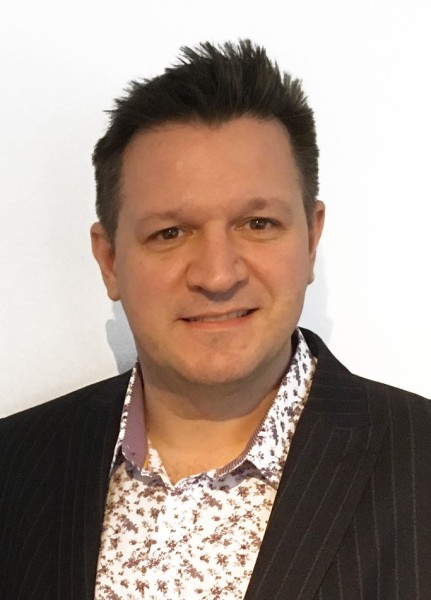
“Web design pricing is not a one-size-fits-all approach. At Imagefix, we adopt a flexible pricing system tailored to each client’s specific needs. While we have fixed pricing for straightforward projects like a 6-page brochure site, most projects are evaluated individually. We take into consideration various factors to determine the most appropriate pricing structure.”
To ensure their clients’ commitment, Imagefix divides payments into two installments.
They receive the first half of the sum before the project begins. The remaining half is due once the client approves the project.
West adds that the agency does not launch the website until they are fully paid:

“It’s important to note that we won’t launch the website on the live domain until we’ve received full payment, providing peace of mind for both parties involved.”
Key web design pricing advice from Imagefix
Open communication and transparency are the keys to the satisfaction of both parties. West explains that this is achieved through detailed briefs and meetings:

“Make sure to clarify the scope of work, expectations, and payment terms upfront. Detailed project briefs and client meetings are invaluable in understanding their needs and objectives.”
According to West, ensuring a client understands the work involved and has realistic expectations goes a long way when it comes to project success:

“By establishing a clear understanding and setting realistic expectations, you can ensure a smoother pricing and project execution process while minimizing potential misunderstandings.”
Absolute Digital Media
“When onboarding a new design project, it’s important to set expectations from the start.” — Ben Austin, Absolute Digital Media
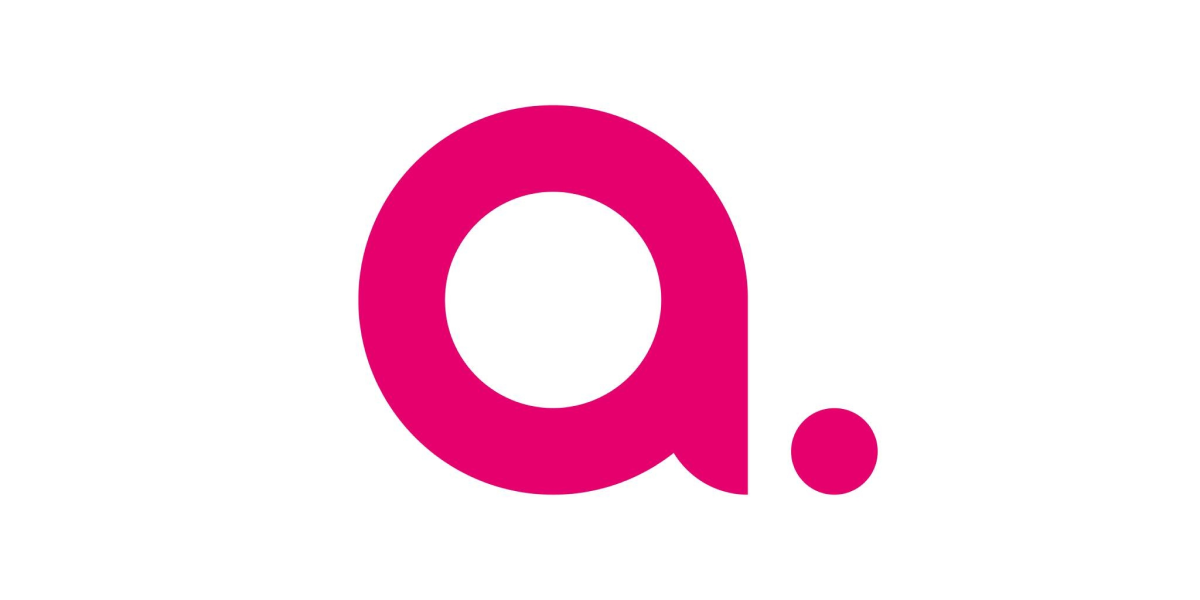
A digital marketing agency Absolute Digital Media offers various services to clients, including SEO, PPC, Digital PR, link building, and web design. They’re passionate about delivering innovative campaigns and data-driven results.
How Absolute Digital Media charges clients
CEO and founder Ben Austin believes clear communication regarding expectations and pricing is crucial for ensuring efficiency within the team:

“We often begin by providing the client with a brief to iron out any initial concerns or queries. Once the web design has been produced, we’ll go ahead and share it with the client. The client then has 3 working days to provide us with feedback during which time we are happy to jump on a call to discuss the project in more detail.”
Austin also claims that limiting the clients’ feedback window helps with time management:

“To prevent hundreds of revisions, we also make it clear that the feedback window is limited to only a few revisions. By doing so, we can ensure that we stick to the projected web design cost, ensuring the project is still profitable and to avoid falling into any holes.”
Austin explains that Absolute Digital Media has a base price for their design services and then adds on charges for extra features:

“As a rule of thumb, our design services start from £5,000 due to the level of expertise and resources involved. However, we always consider each design request on a case-by-case basis to ensure it can be fulfilled in a way that suits both the client and ourselves.”
Austin clarifies that the exact pricing is based on project needs:

“Smaller projects, such as a landing page design and build cost much less than a whole new website design and build due to the time and resources required to fulfill that brief. Should a client require more complicated elements on their website, we will provide a quote based on the expertise and team needed to ensure their request is fulfilled.”
Key web design pricing advice from Absolute Digital Media
Austin advises anyone working in web design to try not to undersell their services:

“Instead, try educating your potential clients on the value of your work and why X design may cost what you are proposing. Ultimately, they are investing in your resources, expertise, and experience within this field and need to know exactly what you can bring to the table vs other, perhaps more affordable competitors.”
What’s more, Shofiur Rahman, Head Of Technical at Absolute Digital Media, urges design agencies to lay out clear expectations at the very onset of a project:

“It’s really important to manage design project expectations from the start, helping to ensure all parties are aware of the level of work involved and the desired outcome. Doing so will ultimately enable the project to run smoothly, helping to ensure both the client’s brief is fulfilled, and our own best practices such as building websites for SEO.”
💡 Clockify Pro Tip
If you need a way to avoid delays, budget overruns, and failure to meet clients’ expectations, you should learn more about project forecasting:
Beyond the Kitchen Table
“Transparency starts the relationship off on the right basis” — Marie Brown, Beyond the Kitchen Table
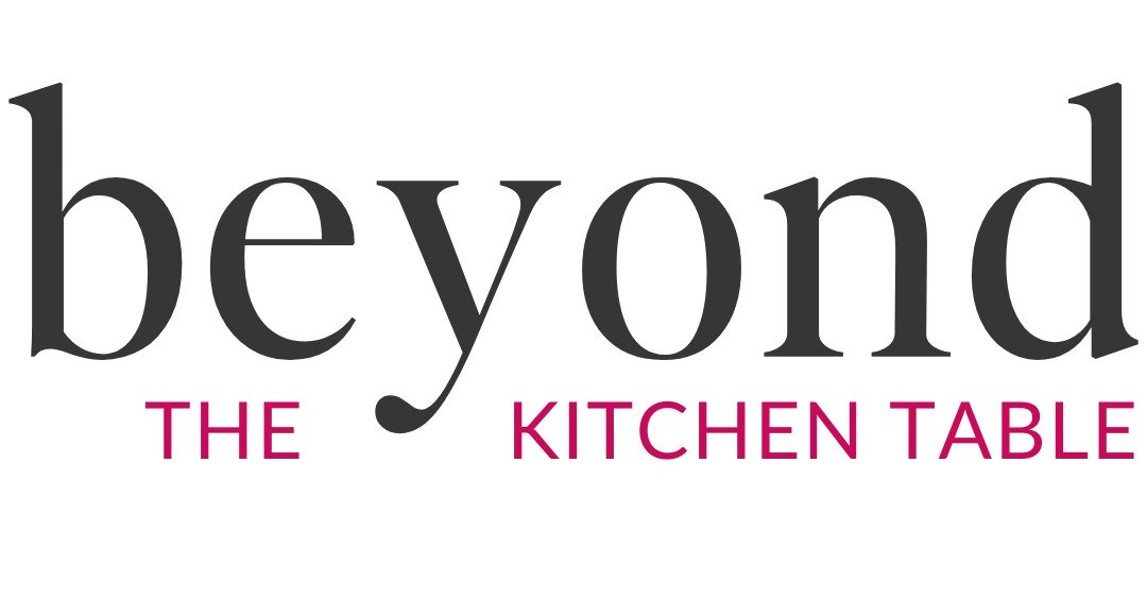
As a website-building business, Beyond the Kitchen Table is focused on helping small business owners build a strong online presence. Aside from web design, the company offers consultancy and marketing advice to new businesses.
How Beyond the Kitchen Table charges clients
Owner of Beyond the Kitchen Table, Marie Brown, simplified her agency’s web design pricing by creating design packages clients can choose from:

“I have web design packages with pricing on my website. These packages are generally enough for most of the potential clients who approach me.”
Brown’s design plans start from £1,900 (around $2,300). She also offers website maintenance for a monthly fee.
In case a client has different requests, Brown is open to preparing a bespoke quote. Still, she believes price transparency on her website ensures her clients have an idea of what they can expect regarding pricing.
Not going live until the payment is received is Brown’s way of guaranteeing she gets paid for her work:

“I charge 50% on booking. I am usually booked up a few weeks ahead and clients are generally keen to secure their spot so I rarely have to chase payment for this. If they don’t pay, they lose their spot! Similarly, I charge the remainder when we’re ready to go live. I don’t put the website live until they have paid, which is a good incentive.”
Beyond the Kitchen Table also offers ongoing website maintenance. Brown incorporated a direct debit system to avoid chasing clients for payments:

“Ongoing maintenance/hosting plans are payable via direct debit. I do often have to chase clients to sign the direct debit and the occasional failed payment, but the direct debit system does mean that I spend less time chasing than I used to before. If a client doesn’t pay, I have the nuclear option of turning off their website. I don’t do this without lots of notices first (tbh I’ve never taken this action).”
Key web design pricing advice from Beyond the Kitchen Table
Brown highlights that pricing packages save time and ensure fair payment:

“I’m a fan of pricing in packages as I think this is much easier for clients to understand. Some web projects with the same spec take more time and some less, which means the hourly rate isn’t the same from project to project. However, provided you set the scope tightly enough (e.g., limiting the number of revisions, etc.) then I find it works well enough. And I don’t spend hours putting together quotes!”
💡 Clockify Pro Tip
Transparency is key for both client satisfaction and team effectiveness. Here’s how to create transparent teams:
How should I charge for a web design: choosing the best pricing model
The most important aspect of charging for your web design services is choosing the right pricing model.
Let’s go over the most popular pricing models with pros and cons lists for each one.
Bear in mind — most agencies use a combination of project billing models to cater to different client requests.
Pricing model #1: Hourly rate
The simplest way of charging for your services is using an hourly rate.
You set the price for an hour of a designer’s work depending on the service they provide. The designer should then track each hour worked on the project. Once the project is done, you charge your client based on how much time it took the designer to complete the service.
Tracking hours worked can be a time-consuming task. Luckily, there are great time trackers out there that make things much easier. For instance, with Clockify you can track hours in real-time or add all your time entries manually.
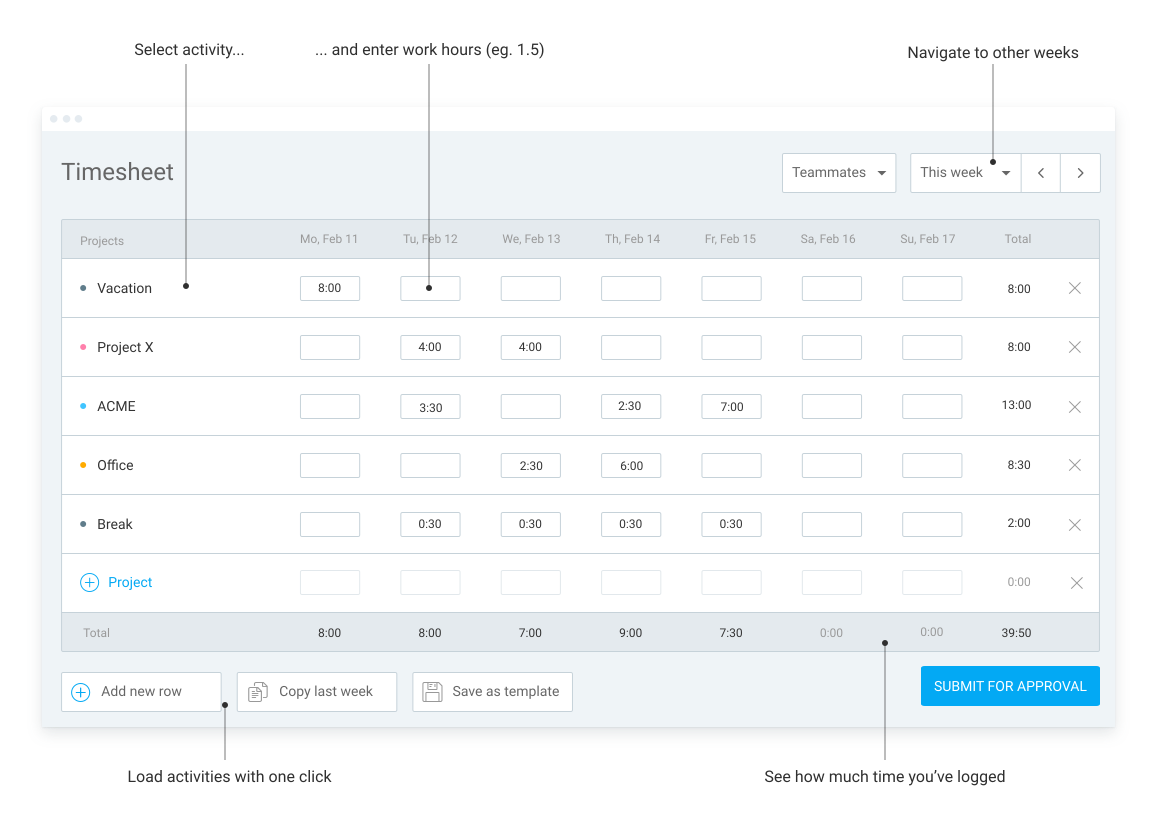
You understand how to track your hours, but how about setting your hourly rate?
If you aren’t sure what your designer’s hourly rate should be, the median pay for US web developers and digital designers in 2022 was $38.81 per hour.
Pros of using an hourly rate as a pricing model:
- Flexibility regarding the project scope,
- Easy to calculate, and
- Easier to present the costs to the client.
Cons of using an hourly rate as a pricing model:
- Difficulty predicting the final cost, and
- Possibility of overworking (as more hours equals more money).
💡 Clockify Pro Tip
Looking for an easy way to calculate billable hours? Check out this guide:
Pricing model #2: Fixed fee
Fixed fee, flat rate pricing, or project-based pricing is a model that involves setting a full price for the project in advance. This model is great for simple projects that don’t require many changes throughout their duration. It’s also good for clients with fixed budgets.
Fixed fees for web design services vary greatly. They could go from $1,000 to $30,000, depending on the agency and the type of services a client requires.
Pros of using fixed fee as a pricing model:
- Offers budget predictability which leaves less room for misunderstandings, and
- Ensures a client understands the charges, making the payment more likely to be honored.
Cons of using fixed fee as a pricing model:
- Not great for projects prone to changes, and
- Difficult to predict the budget for unique projects.
💡 Clockify Pro Tip
An essential step in calculating your fixed fee is estimating the amount of time a project will take. Here’s how to do it:
Pricing model #3: Cost plus
Cost plus pricing includes the basic cost for projects plus the extra service charge.
This model ensures the final payment covers the project cost, but also leaves room for extra charges based on clients’ needs.
Pros of using cost plus as a pricing model:
- Flexible enough for project changes,
- Completely customizable based on a project, and
- Ensures the agency covers basic costs.
Cons of using cost plus as a pricing model:
- Final costs may not be as predictable, and
- Could go over the client’s budget if not managed properly.
💡 Clockify Pro Tip
To complete your web design project successfully and get paid for your work, you need to be able to control, analyze, and forecast the costs more precisely:
Pricing model #4: Value-based pricing
Value-based pricing is a popular pricing model for larger and more experienced agencies. That’s because the price is completely based on the value the agency services bring to the client.
As an agency, you need to prove to the client how valuable your services are. This consists of sharing your portfolio with them and thoroughly analyzing clients’ needs.
Pros of value-based pricing:
- Thorough analysis improves the service and adds more value to the final product, and
- Analysis provides clients with a more in-depth understanding of their potential.
Cons of value-based pricing:
- More expensive, and
- Difficult to understand from a client’s perspective.
What variables influence web design pricing?
Regardless of the pricing model they choose, almost every agency charges differently depending on clients’ requirements. This means they offer different prices for different projects.
In most cases, web design services pricing depends on:
- Project size and timeline, and
- Specific client requirements.
Furthermore, overhead expenses and costs that ensure an agency remains up and running are important elements that need to be reflected in agency prices.
So, figure out how much you need to make to cover your monthly operating costs and make a profit. You can then add these overhead costs to the price of your services.
Imagefix shared with us their example of an extensive list of elements that help them determine their quotes:
- The project’s scope and functionality requirements,
- The type of design and visual aesthetics the client desires,
- The number of pages to be designed,
- Whether the client will provide text and imagery or if Imagefix needs to create or source content,
- The need for backend optimization to enhance website performance, and
- Whether advanced SEO services are necessary, such as migrating to a new URL and redirecting traffic and URLs.
You can use their list or create your own to speed up your pricing process.
How to make sure you get paid for your work?
Agencies employ different strategies that help them ensure they stay profitable and get paid for their work fairly. We summed up key advice from web design agencies on this topic.
Firstly, if you want to protect yourself from non-paying clients, you should always make sure they understand the costs that go into your services.
Providing clarity and explaining the costs and the process helps clients comprehend what you’re doing for them, making them more likely to reimburse you fairly for your services.
Moreover, some agencies, such as Beyond the Kitchen Table, opt to post prices for their services publicly. That way, only the clients that can afford that agency reach out.
Probably the most common way to ensure you get paid for your services is to divide the payment into installments.
Many agencies on our list, such as Ascendly Marketing, Twogether Digital, AJM, Imagefix, and Beyond the Kitchen Table, don’t even begin their work before an initial payment. Once they receive the first installment, they start designing.
In addition, several agencies, such as Imagefix, Twogether Digital, Beyond the Kitchen Table, and A Digital Media Company, time the last installment just before the site goes live. So, the site doesn’t go live until the client pays for the services in full.
Lastly, hiring a legal expert to create a contract you can sign with your clients is another way to protect yourself. If a client fails to fulfill their contractual obligations, you can take legal action against them.
💡 Clockify Pro Tip
A great way to stay on top of billing and invoicing is by using time and billing software. Here’s the list of the best ones on the market:
General advice on web design pricing
Putting in the effort to create a good pricing strategy will go a long way in making the whole process much more convenient for both your agency and the clients.
Advice #1: Create a pricing system
Some agencies on our list created a pricing system that works for nearly every client they have. They have prices for basic services as well as special quotes for more extensive ones. This kind of system is especially helpful if you’re planning to grow your team, as that will make understanding prices easier for new employees.
Advice #2: Be transparent
What’s more, transparency is important.
According to 2022 research on service transparency, organizations that promote transparency, set clear expectations, and provide information about their services are more likely to have stronger relationships with customers and clients.
This research also shows that transparency can bring:
- A competitive edge,
- Customer retention, and
- Long-term business growth.
Moreover, when your client understands what goes into the invoices you send them, they’re more likely to respect your pricing. For instance, you could track billable time and present the overview of tasks completed and hours worked to increase your work’s transparency.
Advice #3: Create a portfolio of satisfied clients
Another thing you can do to make things run more smoothly is to maintain a proven track record of satisfied clients and successful projects. This is a great way to showcase your skills and expertise to prospective clients and help them understand your role in the growth of their businesses.
Advice #4: Communicate effectively
A great way to attract clients willing to reimburse you for your work properly is to communicate starting estimates and ask for clients’ minimum budgets immediately. Those who cannot afford the minimum will appreciate a clean response that allows them to quickly move on to a solution more suitable for them.
As many design agency representatives from this article highlighted, communication is as important in the beginning as it is throughout the project.
Grammarly’s 2023 State of Business Communication Report shows the importance of effective communication both within the company and with clients. According to this report, 63% of businesses experienced higher customer satisfaction due to effective communication. In addition, a whopping 19% of business leaders had lost deals as a result of ineffective communication.
Thus, proper communication is crucial to understanding clients’ requirements and knowing how to meet them.
Conclusion: A good web design pricing system ensures you get paid for your work fairly
As a web design company, you have to make sure your clients understand how important your role is in presenting their brand and driving their business growth.
Experts from several popular agencies offering web design services provided their insights into web design pricing. Based on their responses, we’ve compiled a list of essential things to consider:
- Take time to choose the best pricing method for your agency,
- Offer price and task transparency,
- Maintain good communication with the client throughout the project, and
- Protect your work by dividing payment into installments and signing an agreement with the client.
So, putting effort into organizing your web design pricing goes a long way in ensuring your agency’s profitability and client satisfaction.
✉️ Do you work in the web design industry? Do you have some tips on creating pricing for design projects? Write to us at blogfeedback@clockify.me to give us more insight into design agencies’ pricing, and we may include your answer in this or future articles. Also, if you liked this article, spread the word to your friends and colleagues!



